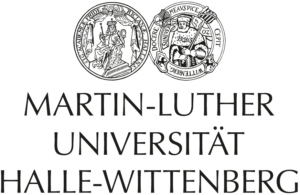Mareen Schäfer on “Structure and dynamics of the nanophase separated comb-like polymer PPDOT as investigated by solid-state NMR”
and
Arne Böker on “Simulations of protein thermodynamics and structures with the PRIME20 model”
Location: Martin-Luther-Universität Halle-Wittenberg Von-Danckelmann-Platz 3, SR 1.03 06120 Halle (Saale) Time: 3.30pm - 5.00pm Link to OpenStreetMap
Abstracts
Structure and dynamics of the nanophase separated comb-like polymer PPDOT as investigated by solid-state NMR
Mareen Schäfer
We investigate the structure and molecular motions of the side and main-chains in the comb-like polymer, poly(1,4- phenylene-2,5-n-didecyloxy terephthalate) with 10 carbons in the alkyl side chain (PPDOT) with respect to its two polymorphic states by means of 13C MAS NMR spectroscopy. Both modifications, called A and B, exhibit a morphology with well-ordered backbones in π − π-stacks separated by nanodomains which are formed by the methylene sequences. A change form the as-synthesized PPDOT-B to PPDOT-A occurs through a solid-solid phase transition above 70°C. At ambient temperatures, the polymorph A slowly converts back to the thermodynamically more stable state B. We use 13C CP MAS spectra to observe the structural changes during the phase transition and the differences in both modifications. The 13C DIPSHIFT experiments yield information about the motionally averaged 1H – 13C dipole-dipole coupling. In the recorded spectra, we do not see any indication of an amorphous backbone phase and therefore we emphasize that the complete sample exhibits a well ordered π-π-stacking for T < 180◦C. The methylene sequences in modification B exist in trans- and gauche-rich conformations, in contrast to modification A where all side chains are in a gauche-rich environment with molecular motions in the intermediate regime at ambient temperatures and fast molecular dynamics at 120◦C. Above 180◦C we detect the formation of a liquid crystal phase, characterized by the loss of the π-π-stacking and molecular motions of the side chains with correlation times τc < 0.01 μs.
Simulations of protein thermodynamics and structures with the PRIME20 model
Arne Böker





One thought on “Doctoral students seminar (April 30, 2019)”